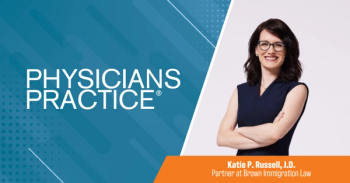
Improve Compensation by Documenting Prolonged Services
Proper documentation and reporting of codes for prolonged services allows providers to improve compensation for lengthy outpatient services.
For 2016, the American Medical Association revised two, existing CPT® codes to describe prolonged evaluation and management (E&M) services by a physician or other qualified health care professional. In addition, the AMA created two new codes to describe prolonged E&M services performed by clinical staff, under the supervision of a qualified provider. Proper documentation and reporting of these codes allows providers to improve compensation for lengthy outpatient services.
For provider services, turn to 99354-99355
The AMA's CPT Changes 2016: An Insider's Guide instructs, "Codes 99354 and 99355 are intended to report prolonged services that are provided by a physician or other qualified health professional."
+99354 Prolonged evaluation and management or psychotherapy service(s) (beyond the typical service time of the primary procedure) in the office or other outpatient setting requiring direct patient contact beyond the usual service; first hour (List separately in addition to code for office or other outpatient Evaluation and Management or psychotherapy service)
+99355 … each additional 30 minutes (List separately in addition to code for prolonged service)
Prolonged services 99354 and 99355 must be reported in addition to a primary outpatient (never inpatient) E&M or psychotherapy service, as described by CPT® codes 90837, 99201-99215, 99241-99245, 99324-99337, 99341-99350. The CPT® codebook additionally instructs, "Appropriate codes should be selected for supplies provided or other procedure performed in the care of the patient during this period."
For supervised staff services, call on 99415-99416
In contrast to 99354 and 99355, "Codes 99415 and 99416 are intended to report when prolonged services … are provided by clinical staff," per CPT Changes 2016.
+99415 Prolonged clinical staff service (the service beyond the typical service time) during an evaluation and management service in the office or outpatient setting, direct patient contact with physician supervision; first hour (List separately in addition to code for outpatient Evaluation and Management service)
+99416 …each additional 30 minutes (List separately in addition to code for prolonged service)
You may report 99415 and 99416 with primary E&M services 99201-99205 and 99211-99215, only. You may not report 99415 and 99416 with any other E&M (inpatient or outpatient) or psychotherapy services.
Additionally, services described by 99415 and 99416 must be provided under the direct supervision of a physician or other qualified health care professional. As defined at 42 CFR 413.65:
"… 'direct supervision' means that the physician or nonphysician practitioner must be present on the same campus where the services are being furnished. For services furnished in an off-campus provider based department as defined in 42 CFR 413.65, he or she must be present within the off-campus provider based department. The physician or nonphysician practitioner must be immediately available to furnish assistance and direction throughout the performance of the procedure. The physician or nonphysician practitioner does not have to be present in the room when the procedure is performed."
More generally, a member of the clinical staff works under the supervision of a physician or other qualified healthcare professional, and is allowed by law, regulation, and facility policy to perform or assist in the performance of a specified professional service, but does not individually report that professional service. Other policies may also affect who may report specific services.
Time is key for prolonged services
All prolonged service codes are time-based, but the precise reporting requirements differ, depending on who provides the service.
Report 99354 in addition to the primary E&M or psychotherapy service for the initial 30 minutes to 74 minutes of prolonged E&M or psychotherapy services (i.e., time in excess of that described by the primary E&M or psychotherapy service reported). You may report only unit of 99354, per day. Report 99355 for each additional 30 minutes of prolonged E&M or psychotherapy services beyond the initial 74 minutes:
Total Duration of Prolonged Services Codes
< 30 minutes
Not separately reported
30-74 minutes
99354
75-104 minutes
99354, 99355
105-134 minutes
99354, 99355 x 2
These services require direct patient contact, but include additional, non-face-to-face services on the patient's floor or unit during the same session. Time spent performing other, separately reported services does not count toward prolonged services time.
You may report 99415 once, per day, in addition to the primary E&M service for the initial 45 minutes to 74 minutes of prolonged clinical staff services (i.e., time in excess of that described by the primary E&M service reported). Report 99416 for each additional 30 minutes of prolonged clinical staff services beyond the initial 74 minutes:
Total Duration of Prolonged Services Codes
< 45 minutes
Not separately reported
45-74 minutes
99415
75-104 minutes
99415, 99416
105-134 minutes
99415, 99416 x 2
All time counted toward 99415 and 99416 must be face-to-face with the patient, but does not have to be continuous. Time spent by clinical staff performing other, separately reported services does not count toward prolonged services time.
Per CPT® codebook instructions, you may report 99415/99416 for no more than two simultaneous patients. Facilities may not report 99415 or 99416.
Coding examples show the way
Appendix C (Clinical Examples) of the CPT® codebook offers an example scenario of 99354-99355:
"A 20-year-old female with history of asthma presents with acute bronchospasm and moderate respiratory distress. Initial a valuation shows respiratory rate 30, labored breathing, and wheezing heard in all lung fields. Office treatment is initiated that includes intermittent bronchial dilation and subcutaneous epinephrine. Requires intermittent time with a patient …
"Although the provider's time spent in care of the patient may be intermittent, documentation must establish the total time. In this case, we will assume a total service time of 150 minutes, with a primary E&M service 99214 Office or other outpatient visit for the evaluation and management of an established patient, which requires at least two of these three key components: A detailed history; a detailed examination; medical decision making of moderate complexity …"
CPT® establishes a reference time of 25 minutes for 99214 ("Typically, 25 minutes are spent face-to-face with the patient and/or family"). This reference time must be subtracted from the total service time, which results in 125 minutes of prolonged services time (150 - 25 = 125), which is reported 99354 (first hour), 99355 x 2 (additional 65 minutes).
CPT Changes 2016 provides a clinical example of 99415-99416:
"A 52-year-old female presents with gastroenteritis and persistent vomiting. She presents with signs and symptoms of clinical dehydration. Evaluation and management is performed by the physician, the decision is made to begin oral rehydration in the office. Prolonged monitoring and observation for two hours ensues with intermittent evaluation of the patient by the physician.
In this case, we will assume a primary E&M service 99213 Office or other outpatient visit for the evaluation and management of an established patient, which requires at least two of these three key components: An expanded problem focused history; an expanded problem focused examination; medical decision making of low complexity…"
The documentation establishes 120 minutes of prolonged monitoring and observation by clinical staff, which is reported 99415, 99416 x 2.
Newsletter
Optimize your practice with the Physicians Practice newsletter, offering management pearls, leadership tips, and business strategies tailored for practice administrators and physicians of any specialty.














